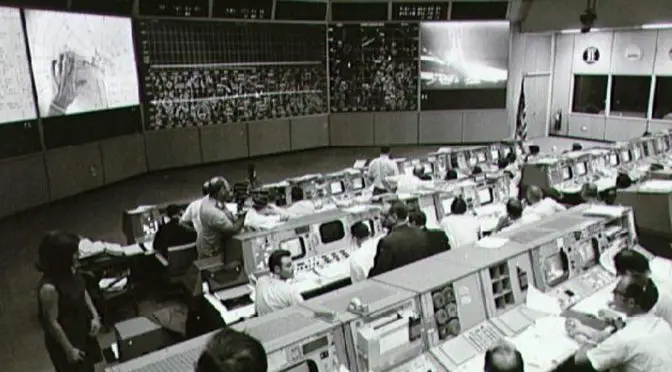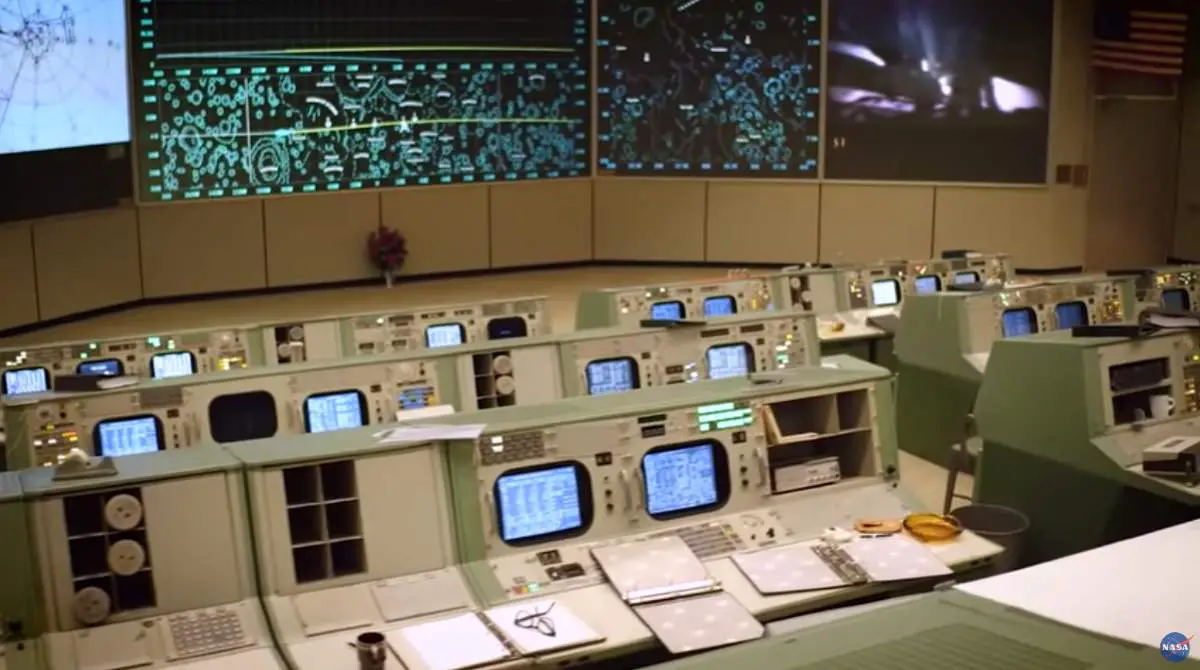The historic Apollo mission control room in Houston is set to be fully restored by the 50th anniversary of the Apollo 11 mission in July 2019. It will provide a snapshot of how it looked during the Moon landing on July 20, 1969.
Apollo 11 was the spaceflight that landed the first two humans on the Moon. Mission commander Neil Armstrong (August 5, 1930 – August 25, 2012) and pilot Buzz Aldrin (born Edwin Eugene Aldrin Jr.; January 20, 1930) landed the lunar module Eagle on July 20, 1969, at 20:18 UTC. A third astronaut, Michael Collins (born October 31, 1930) piloted the command module Columbia alone in lunar orbit while they were on the Moon’s surface.
Armstrong became the first to step onto the lunar surface six hours after landing on July 21 at 02:56:15 UTC; Aldrin joined him about 20 minutes later. For the 50th anniversary of the Apollo 11 lunar landing mission, NASA’s Johnson Space Center, Space Center Houston, and the Apollo Flight Operations Association (AFOA) decided to restore the historic mission control room in Houston. In July 2019, the room will be fully restored.
The restoration of the historic Apollo mission control room
According to NASA, the restoration will start this December. It will include the Mission Operations Control Room (MOCR), Visitor Viewing Room, Simulation Control Room, and the Summary Display Projection Room (“bat cave”), the areas that make up the Apollo MCC – all located in the Christopher C. Kraft Mission Control Center (MCC) at Johnson. The MCC is where NASA’s flight control team planned, trained, and executed Gemini, Apollo, Apollo/Soyuz, Skylab, and Space Shuttle missions until 1992 including the momentous Apollo 11 and Apollo 13 missions.
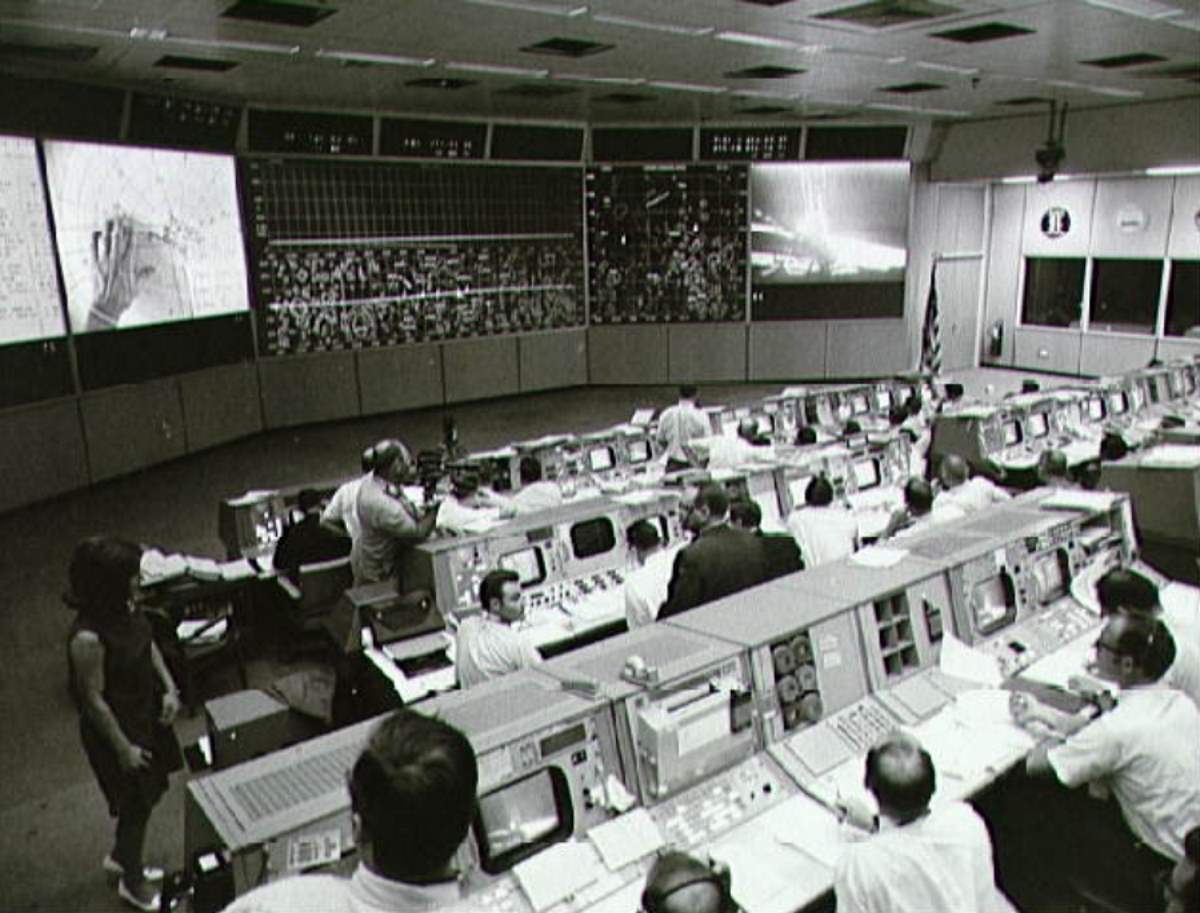
In a statement published on December 1, 2017, NASA specified that: “The restoration of this National Historic Landmark will create a space for the Apollo generation to remember an incredible time in history and keep that inspiration alive for the next generation. The lessons learned from Apollo set the stage for subsequent NASA programs, including the Space Shuttle Program, which made the construction of the International Space Station possible, and the Orion Program, which will take astronauts into deep space and farther than ever before.”
“In July 2019, visitors will be able to experience the drama of the Apollo moon landing from the Visitor Viewing Room, learning firsthand how the accomplishments of an earlier generation catapulted the future of space exploration.”
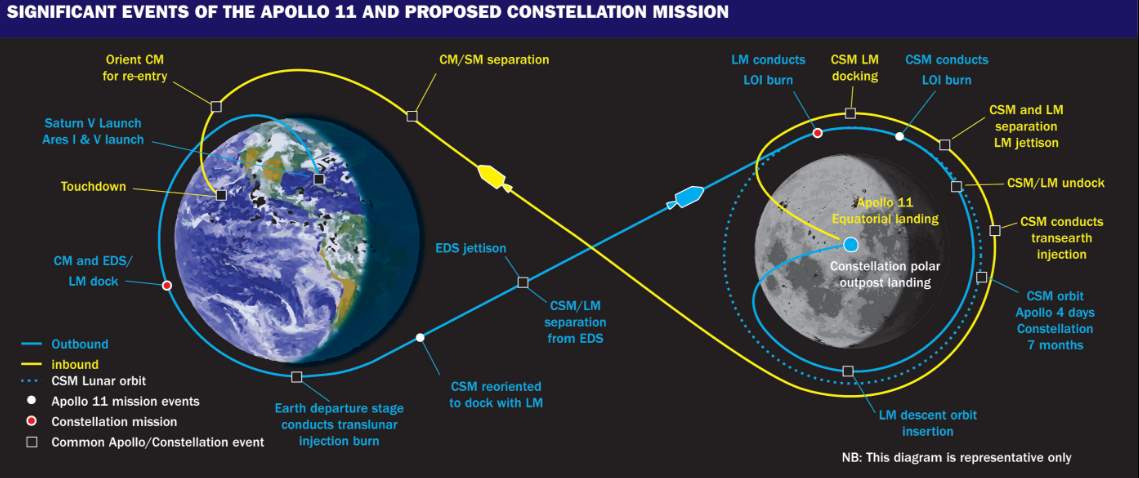
Related: Apollo 11’s journey to the moon, annotated (Video)
Moon Landing
“Houston, Tranquility Base here. The Eagle has landed.”
Neil Armstrong
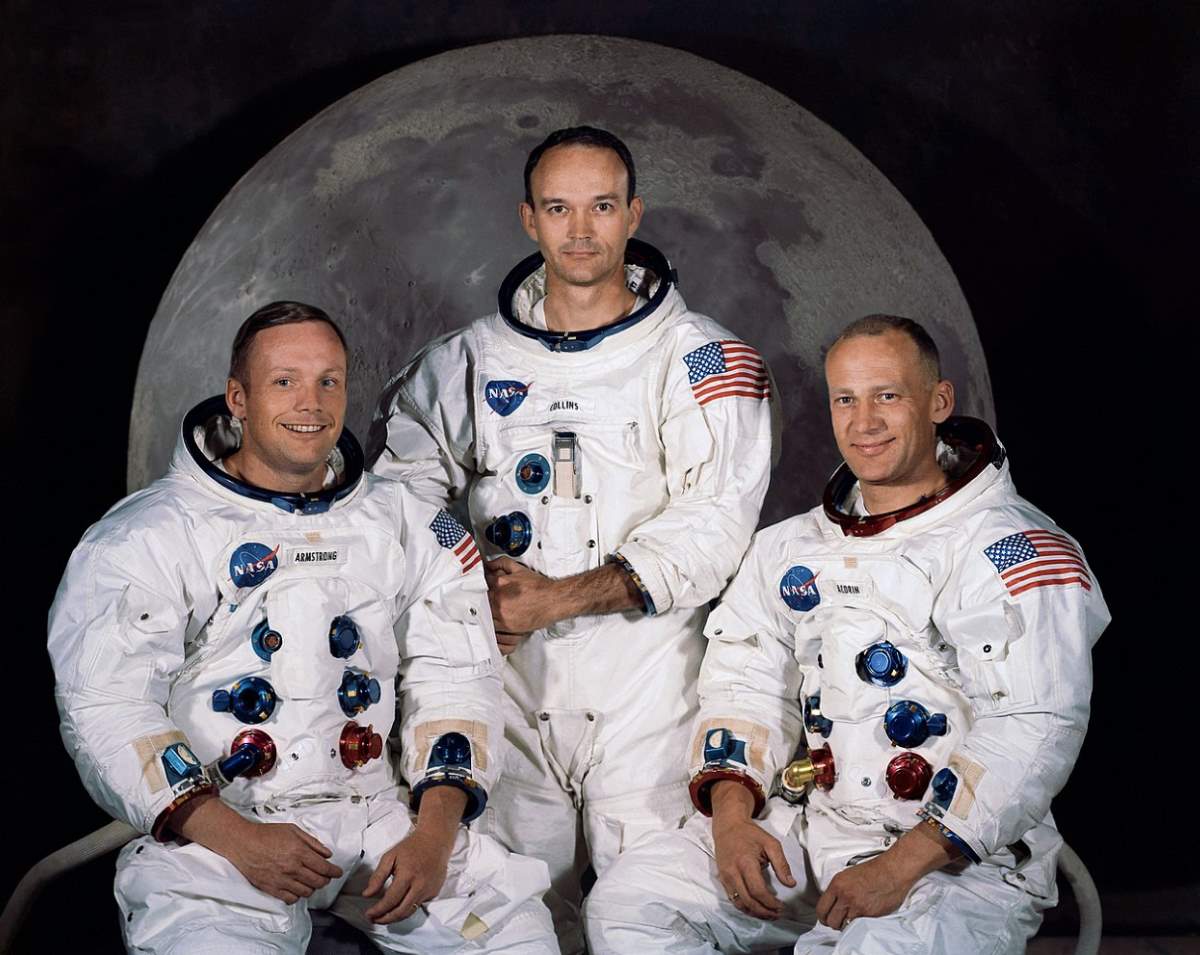
Apollo 11 launched from Cape Kennedy on July 16, 1969, carrying Commander Neil Armstrong, Command Module Pilot Michael Collins, and Lunar Module Pilot Edwin “Buzz” Aldrin. About 12 minutes later, the crew was in Earth orbit. After one and a half orbits, Apollo 11 got a “go” for what mission controllers call “Translunar Injection”. In other words, it was time to head for the Moon. Three days later the crew was in lunar orbit. A day after that, Armstrong and Aldrin climbed into the lunar module Eagle and began the descent, while Collins was orbiting the Moon in the command module Columbia.
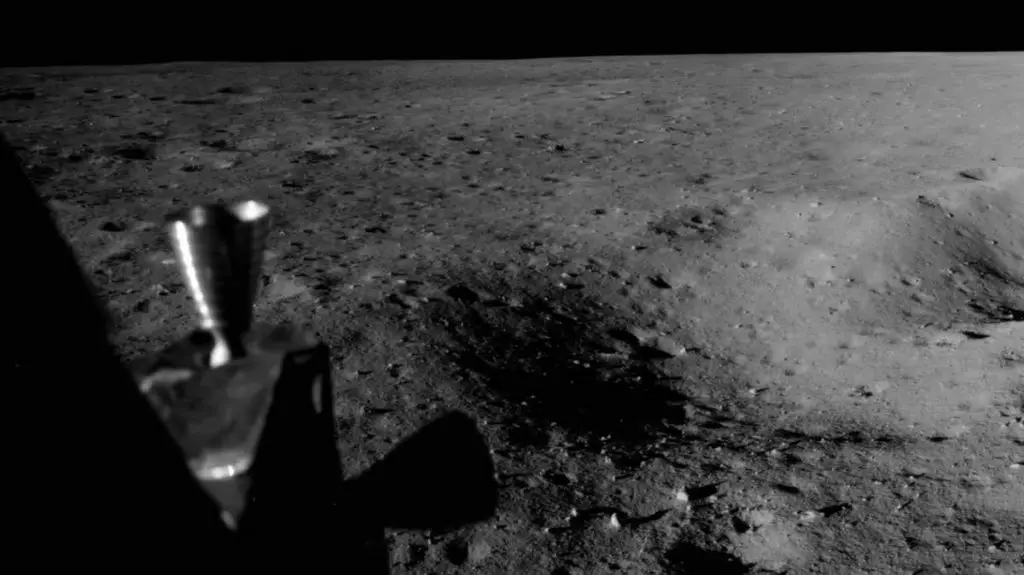
Related: The complete descent and landing of Apollo 11 (Video)
Eagle landed in the Sea of Tranquility at 20:17:40 UTC on Sunday, July 20 with only about 25 seconds of fuel left. Armstrong and Aldrin stayed a total of 21 hours, 36 minutes on the lunar surface. The astronauts used Eagle’s upper stage to lift off from the lunar surface and rejoin Collins in the command module. They jettisoned Eagle before they performed the maneuvers that blasted them out of lunar orbit on a trajectory back to Earth. They returned to Earth and landed in the Pacific Ocean on July 24.
The landing was broadcast on live TV to a worldwide audience. Armstrong stepped onto the lunar surface and described the event as “one small step for [a] man, one giant leap for mankind.”
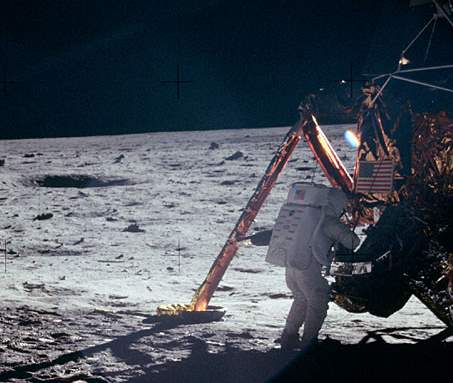
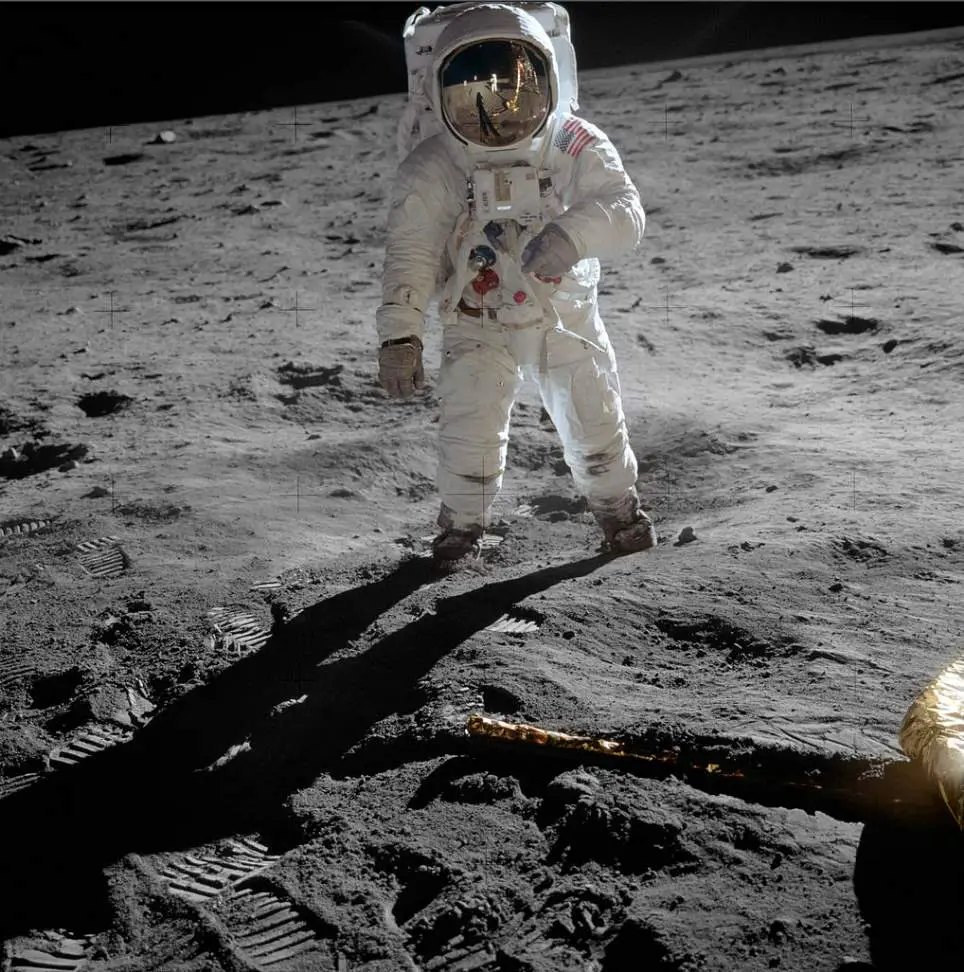
This is the actual photograph as exposed on the moon by Armstrong. He held the camera slightly rotated so that the camera frame did not include the top of Aldrin’s portable life support system (“backpack”). A communications antenna mounted on top of the backpack is also cut off in this picture. When the image was released to the public, it was rotated clockwise to restore the astronaut to vertical for a more harmonious composition, and a black area was added above his head to recreate the missing black lunar “sky”. The edited version is the one most commonly reproduced and known to the public, but the original version, above, is the authentic exposure.
This image was cataloged by NASA Headquarters of the United States National Aeronautics and Space Administration (NASA) under Photo ID: AS11-40-5903.
Image: Wikipedia
Below is the footage from the Apollo 11 moonwalk that was partially restored in 2009:
Oh, and the Moon landing conspiracy theorists, this is for you.
Adam Ruins Everything – Adam Conover, CollegeHumor’s resident know-it-all, and major bummer, takes on society’s biggest misconceptions.
Sources
- “The Historic Apollo Mission Control Center Will Be Restored” on NASA.gov
- Apollo 11 on W
ikipedia - “Apollo 11 Mission Overview” on NASA.gov
- “July 20, 1969: One Giant Leap For Mankind” on NASA.gov
- How Many Elephants are Left in the World in 2025? - August 17, 2025
- Moon Landings: All-Time List [1966-2025] - February 2, 2025
- What Is Max-Q and Why Is It Important During Rocket Launches? - January 16, 2025
